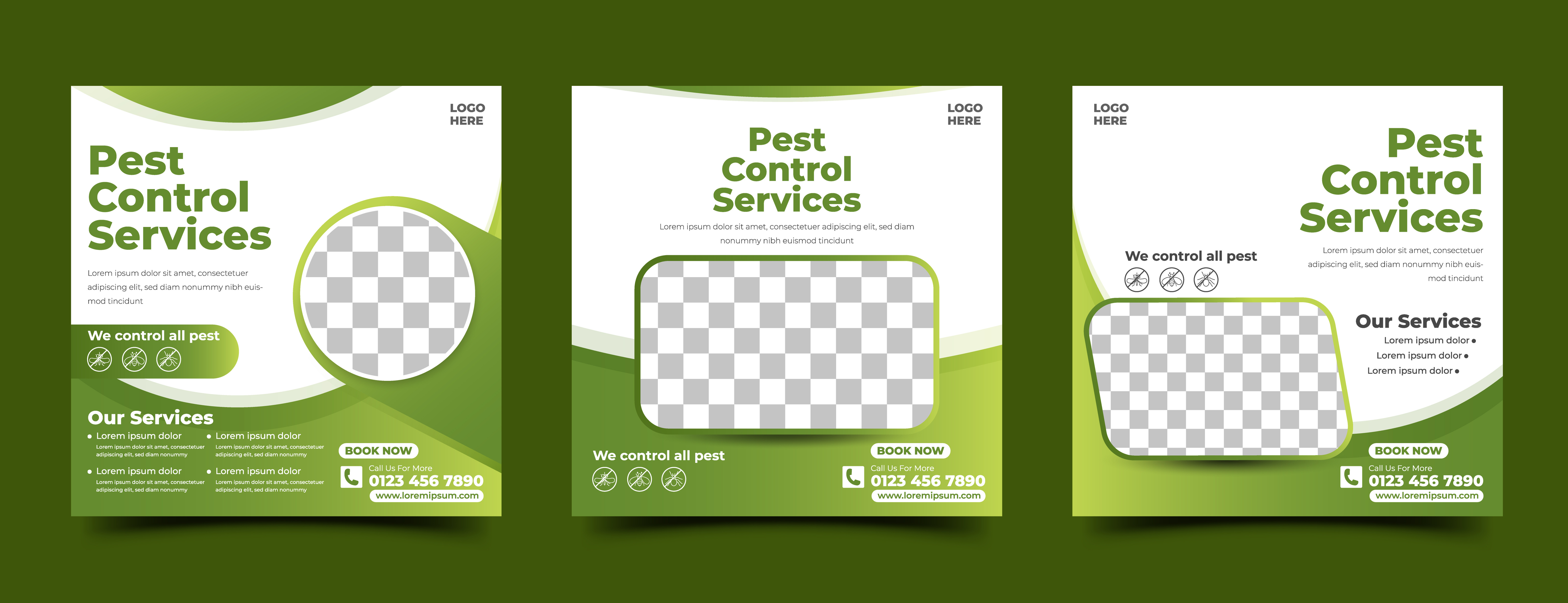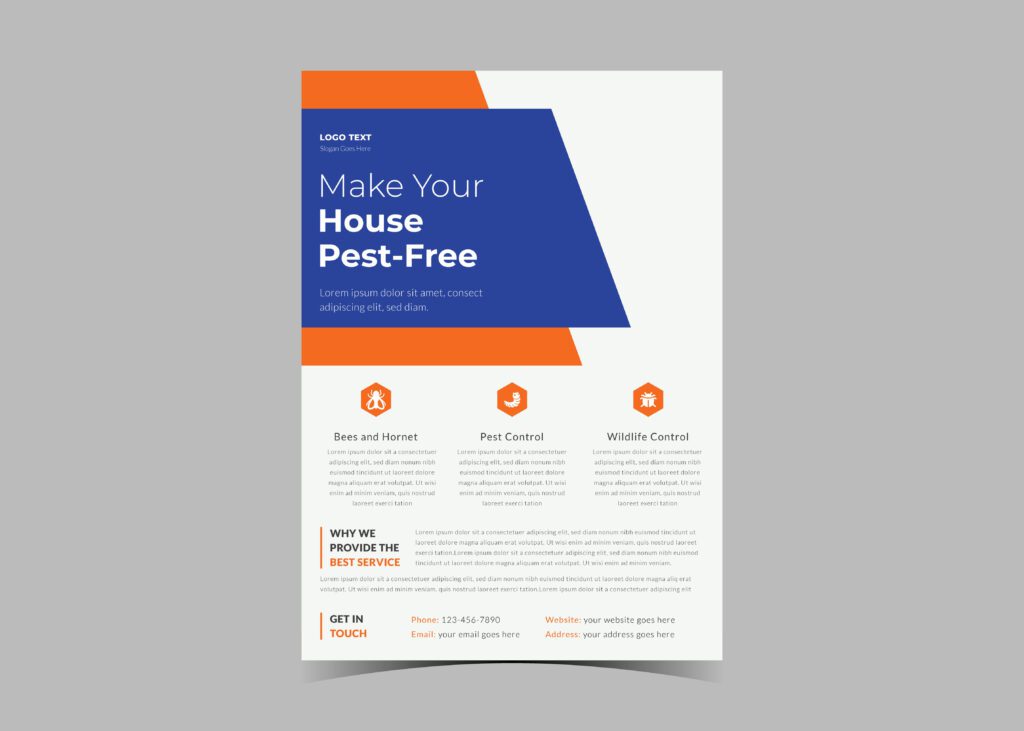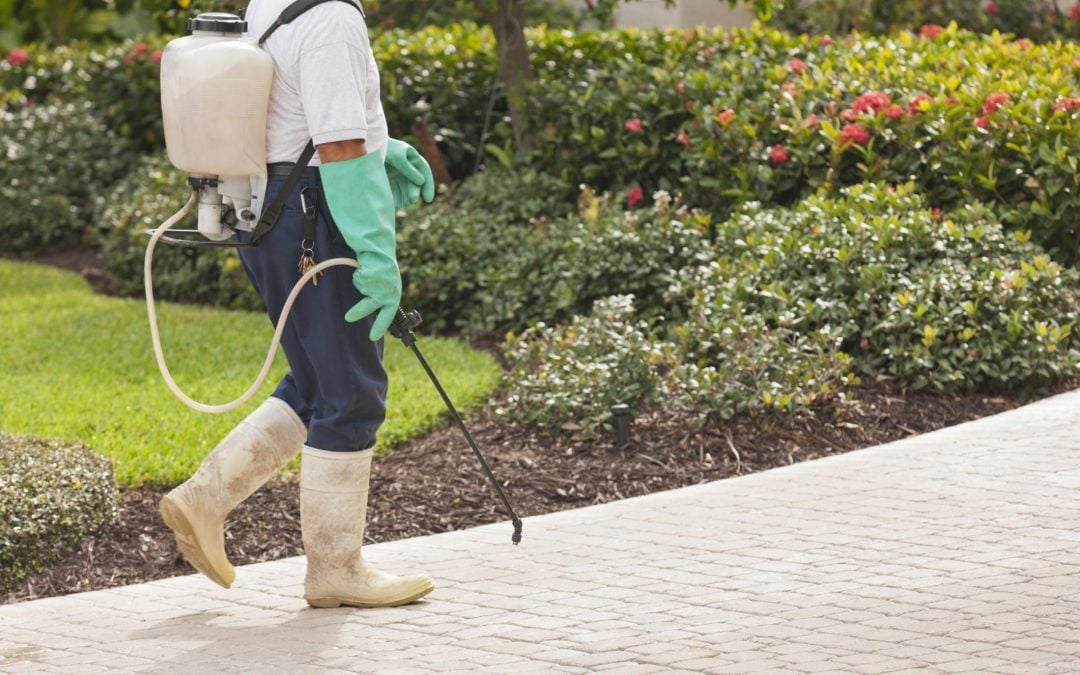How to Write a Lawn Care Contract (with Free Downloadable Template)
Use our lawn care contract template and tips to create and send contracts faster,...

Branding your pest control business is critical to attracting customers and growing operations. It’s the foundation for your company’s story, helping you form a unique identity for your business and decide how you want others to perceive it.
When you take the time to develop, enrich, and launch your brand, there are many positive benefits. The consistency of your messaging and look has the potential to drive significant results. In fact, brands that do this well can increase revenue by up to 33%.
In this guide, we’ll go over everything you need to know to develop effective and impactful pest control branding.

When it comes to branding, your company’s voice is the best place to start.
Think of a brand voice as creating a personality for your business that will guide you in all communications. It’s a key element to brand consistency, which can yield more sales.
Your voice should apply to everything you say as a company and how you say it. Here are some elements of brand voice to think about:
Keep in mind that your brand’s voice will remain consistent at a high level, but your tone may change. For example, the tone you use in a case study will differ from the one you use on social media.
When you create a brand voice, you’ll have a guide for all your content. Consider it the compass for developing and executing a business marketing strategy.
The voice you create is the essence of your pest control business and is the jumping-off point for marketing tactics, including how you’ll market to your target audience.
For example, you may characterize your voice as environmentally friendly because it matters to your customer base. You’d then develop specific points around this principle that you can use in many channels, from your website to social media posts and display ads.
A unifying brand voice is also something that employees can benefit from. It provides them with the heart and soul of the business and what matters to you in how you present it. They’ll appreciate that the organization prioritizes this aspect of the company, making their jobs easier, especially for those interacting with customers.
The continued stability of messaging presents a solid front to customers. Without a strong voice, messaging can be confusing, misleading, or even frustrating. You’ll avoid all this when you invest in developing a brand voice.
Another component of voice development is determining brand and style guidelines. These guidelines are a holistic set of standards defining a brand’s grammar, logo usage, colors, visuals, and more.
These apply to content and design, so anyone can look at them and know the “rules.” Here are some things you should include in your brand guidelines:
To help you get started with your pest control brand’s voice, here are a few extra tips:

Along with your voice, design is a crucial element in pest control branding.
The design aspect of your brand is the visual complement to your brand voice. Consistency matters here as well.
No matter the channel, your design elements should follow the same patterns, making them recognizable to prospective customers. A design plan will involve several components, including colors, fonts, and logo usage.
Your brand’s color palette will be the basis for all your visuals, prominent in both digital and print applications.
Color can impact how others perceive a brand and improve brand recall. In fact, colors can increase brand awareness by 80%. You can probably quickly think of numerous well-known brands and the colors you associate with them. You want to create that same experience for your audience.
Different colors have different meanings or connotations that could work well for your industry. That’s why choosing the right ones is so important.
Here are a few examples of colors and the moods and perceptions they create:
Your logo is the most important visual for your pest control brand. For many, it’ll be their first impression of your business. It’s meant to grab attention and be memorable while conveying what you do.
A modern and clean logo design will be essential in helping you build your brand’s character. In fact, 60% of potential customers will avoid your company if they find your logo to be ugly, odd, or strange. That’s how critical it is that your logo connects with your audience.
Here are some quick tips for logo selection:
The colors, logos, and fonts you choose for your pest control branding will all be part of your brand kit.
This kit should be a short guide to your brand’s visual identity. Documenting these elements ensures that anyone within or outside your organization has the information needed to portray your brand consistently every time.
Developing your brand kit doesn’t have to be complicated. It can even be as simple as creating a Google Drive folder, for example, to house all relevant branding information. This would include things like your logo variations, collateral templates, business card files, style guides, and more.
A brand kit makes these assets easily accessible, so there’s no confusion about where to find them.
Building a successful brand relies considerably on your reputation.
For the pest control industry, prospective customers want to know you have the experience and credibility to resolve their pest problems. That’s why your customer service process is essential to maintaining a good brand reputation.
Customer service failures can lead to negative reviews and unhappy customers. And the relationship you build with your customers starts with their impression of your business.
Consumers are used to interacting with brands every day in many different channels. They’ve come to expect a cohesive experience from the businesses they interact with and will quickly move on if they see a company all over the place.
Consistently presenting a similar voice, style, and look informs every person’s impression of your company. If you deviate from this, it sends mixed messages.
When considering how customer service links to branding, go back to your brand voice. Here, you outlined the values that you want to embody in your pest control company’s customer-facing elements. Those same values should be a foundation for customer service interactions.
Those who spend the most time with customers shape your branding, so they need clarity on how to do this consistently every day. When you have company values in place, employees understand expectations and will deliver the best experiences for your customers.
A vital tool for executing this consistent and branded customer service experience is a CRM (customer relationship management) platform.
CRMs allow you to keep customer data in one place. Along with contact details, a CRM can track customer interactions and personalize them.
A pest control CRM is specially designed for your field. It enables you to customize communications based on user preferences, track leads, automate reminders, and access key insights for your sales team.
Another prominent feature of a CRM is the ability to segment email campaigns. Segmenting and personalizing your marketing emails help support a positive customer experience by creating meaningful touchpoints before, during, and after your services. This can be achieved through Briostack’s pest control software for small businesses.
Here are a few more tips to keep in mind when establishing your pest control customer service experience:
Looking for a Pest Control CRM?
Briostack has everything you need.
{{cta(‘025b6e24-2849-49e2-af71-ab2a21f90800’)}}

Creating and refining your company voice, design elements, and customer service experience are important steps to building your pest control brand.
However, your work isn’t done after you your brand is built—you still need to work to maintain it.
Let’s review some tips for preserving your pest control brand’s carefully cultivated image.
Your team can be excellent contributors to branding, especially when it comes to your values. If they’re involved in the process, they are also more likely to uphold it.
Ask for your team’s feedback and ideas regularly.
Maintaining your brand begins and ends with consistency. That’s why it’s crucial to document your strategies and ensure that all parties are familiar with them. Everyone needs to stay on the same page.
This applies to every platform you use, from your website and social media to email campaigns and other marketing efforts. Your brand and style guidelines and your brand kit will make consistency an easier goal to achieve.
Reputation management is also necessary for maintaining your pest control brand. You’ll receive both negative and positive reviews, as any business will.
Responding to reviews, both good and bad, is a good idea. It establishes that you care about customer feedback and remain true to your brand values.

Once you’ve solidified your pest control brand, it’s time to grow it.
The promotion of your brand includes various marketing strategies to further brand awareness. Word-of-mouth referrals are an excellent way for others to learn about your business, but you’ll need more than that if you want to sustain and grow your company.
You can do this with traditional and digital pest control marketing. Let’s take a closer look at these categories.
Traditional marketing tactics are pretty much any types of marketing happening offline.
Examples include door-to-door canvasing and leaving postcards on doors. You could also consider sending out direct mail campaigns to the ZIP codes you service. Other options for pest control traditional marketing can be local radio or TV advertising and out-of-home (OOH) formats like billboards.
Any traditional marketing asset should have a visual and messaging component. If you have a strong branding strategy, you have a head start on developing these. Traditional marketing can also give your brand a level of professionalism that makes partnerships and networking easier.
KEEP READING: 3 Pest Control Marketing Ideas to Attract Customers
Digital marketing encompasses everything you do to promote your brand online. Let’s look at some of the top digital marketing strategies for pest control companies.
Pretty much all of your digital marketing campaigns should drive traffic back to your pest control website. Your website’s design and user experience will impact how customers perceive your brand—and it only takes about 0.05 seconds for them to make their judgment.
So, at a minimum, your website should be modern, easy to navigate, and contain high-quality visuals.
You can also improve your website’s quality and reach by optimizing it for keywords—a strategy called search engine optimization (SEO).
The idea behind SEO is that you want to come up in searches for your markets. Quality website content that contains the words and phrases people are most likely to type into their search engine when they’re looking for pest control services will help you do that. Things like having a Google Business Profile and appearing on other listing sites can also help.
The other side of digital marketing is all the paid advertising vehicles. In conjunction with SEO, for example, you can also use SEM (search engine marketing) to appear on Google Ads.
Another option would be deploying ads on social media. You can also use your social media platforms to post organically (for free).
Email marketing is another way to promote your pest control brand. Upselling to current customers is an excellent way to leverage the channel and is easy to deploy with the right pest control marketing software tools.
And these don’t always have to be emails that are coming from you. If you have relationships with partners, like other local businesses, they could include a mention of your company in their marketing emails.
The basis of this is traditional relationship marketing—you’re just moving into the digital age.
No matter what traditional and digital marketing tactics you prioritize, consistent pest control branding will be crucial to your success. They’ll shape what your ads say and how they look.
And, no matter where they are displayed, customers should be able to recognize that they’re from your pest control business.
Getting painfully low engagement on your email campaigns?
Briostack can help.

Use our lawn care contract template and tips to create and send contracts faster,...

Lawn care conferences give you access to like-minded professionals, networking opportunities, new trends and...

Have you always felt comfortable with, and maybe even fascinated by, bugs and rodents?...